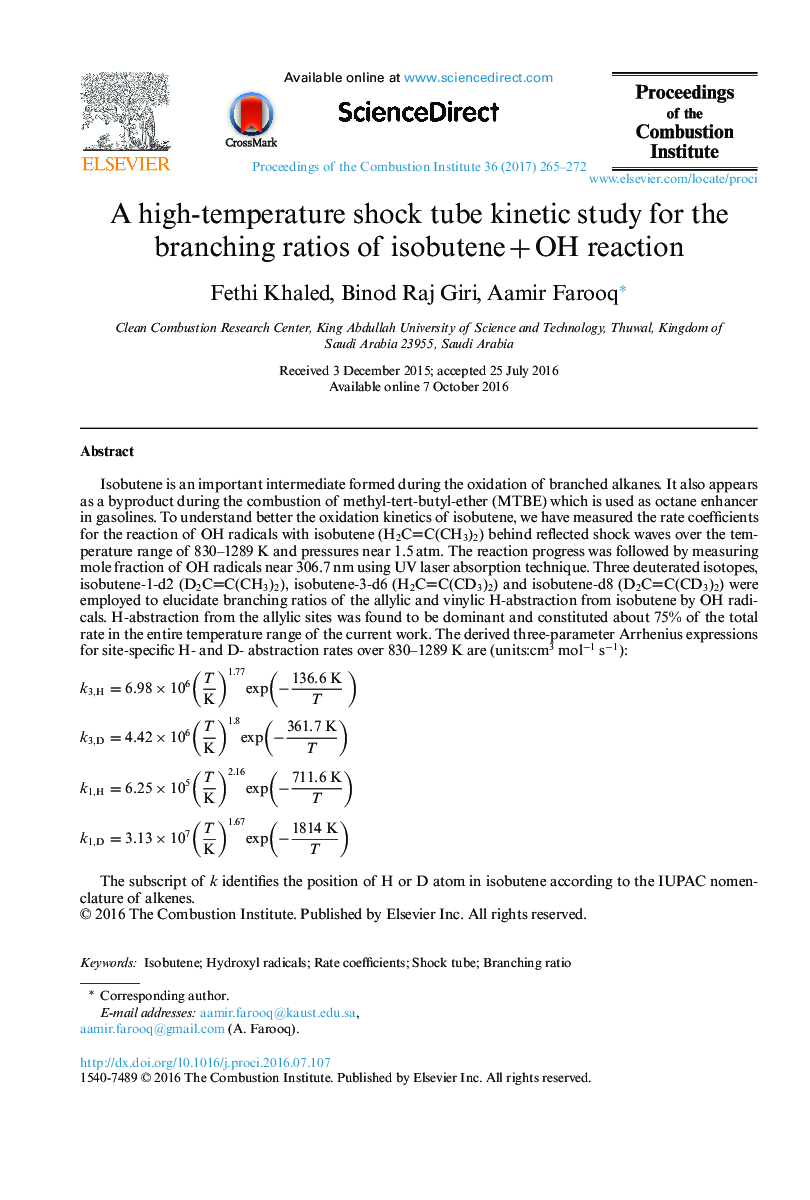| کد مقاله | کد نشریه | سال انتشار | مقاله انگلیسی | نسخه تمام متن |
|---|---|---|---|---|
| 6477876 | 1427917 | 2017 | 8 صفحه PDF | دانلود رایگان |

Isobutene is an important intermediate formed during the oxidation of branched alkanes. It also appears as a byproduct during the combustion of methyl-tert-butyl-ether (MTBE) which is used as octane enhancer in gasolines. To understand better the oxidation kinetics of isobutene, we have measured the rate coefficients for the reaction of OH radicals with isobutene (H2CC(CH3)2) behind reflected shock waves over the temperature range of 830-1289Â K and pressures near 1.5Â atm. The reaction progress was followed by measuring mole fraction of OH radicals near 306.7Â nm using UV laser absorption technique. Three deuterated isotopes, isobutene-1-d2 (D2CC(CH3)2), isobutene-3-d6 (H2CC(CD3)2) and isobutene-d8 (D2CC(CD3)2) were employed to elucidate branching ratios of the allylic and vinylic H-abstraction from isobutene by OH radicals. H-abstraction from the allylic sites was found to be dominant and constituted about 75% of the total rate in the entire temperature range of the current work. The derived three-parameter Arrhenius expressions for site-specific H- and D- abstraction rates over 830-1289Â K are (units:cm3Â molâ1Â sâ1): k3,H=6.98Ã106(TK)1.77exp(â136.6KT)k3,D=4.42Ã106(TK)1.8exp(â361.7KT)k1,H=6.25Ã105(TK)2.16exp(â711.6KT)k1,D=3.13Ã107(TK)1.67exp(â1814KT)The subscript of k identifies the position of H or D atom in isobutene according to the IUPAC nomenclature of alkenes.
Journal: Proceedings of the Combustion Institute - Volume 36, Issue 1, 2017, Pages 265-272